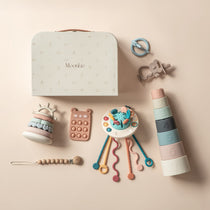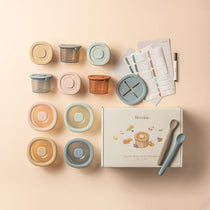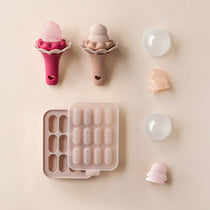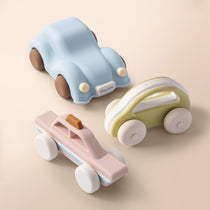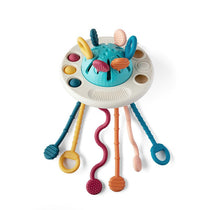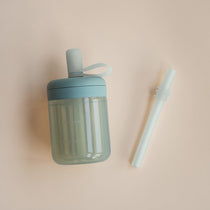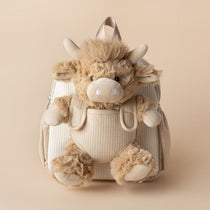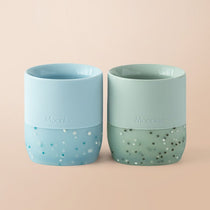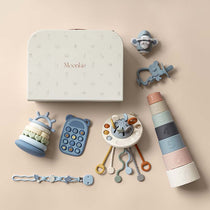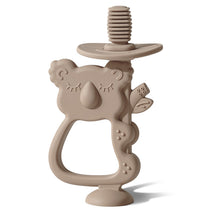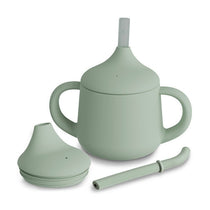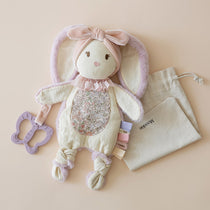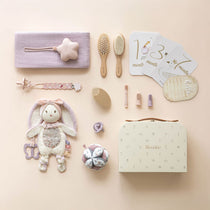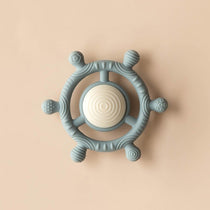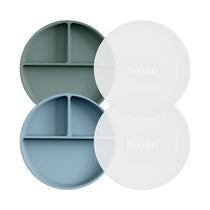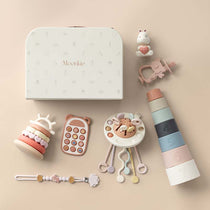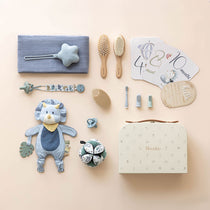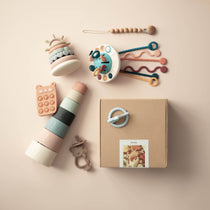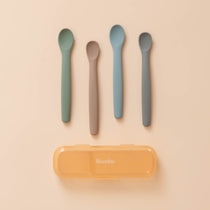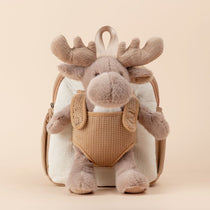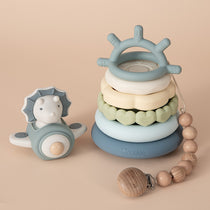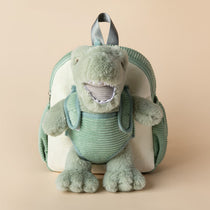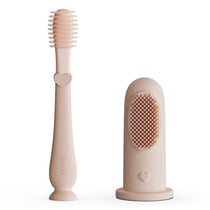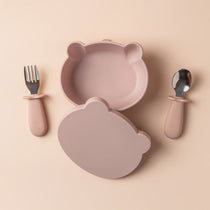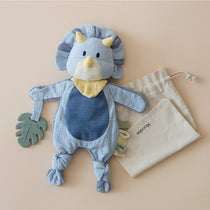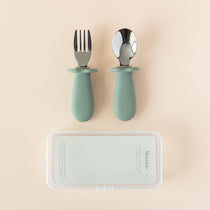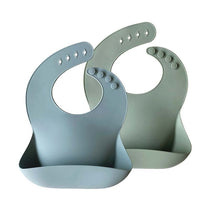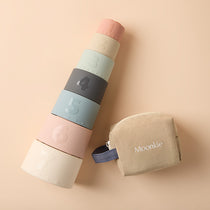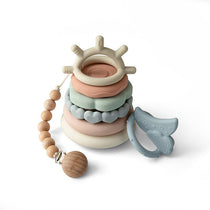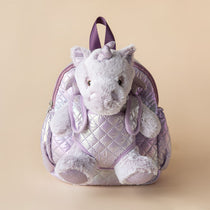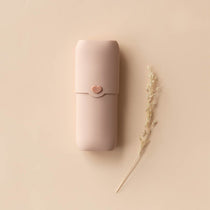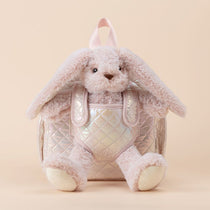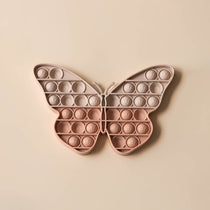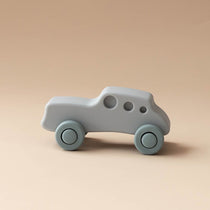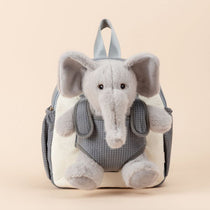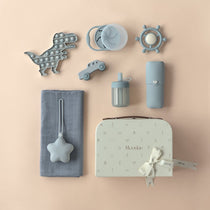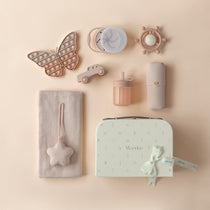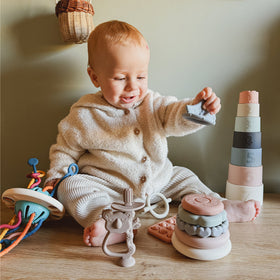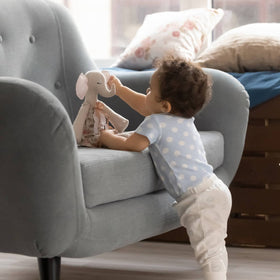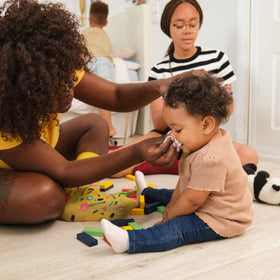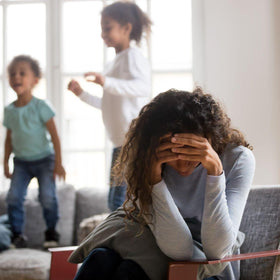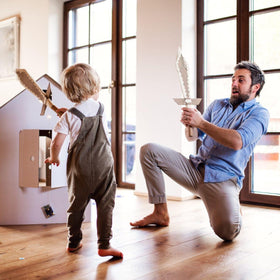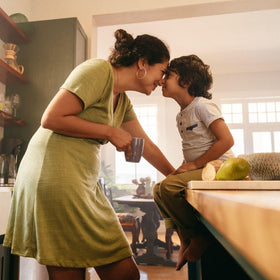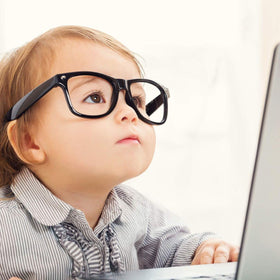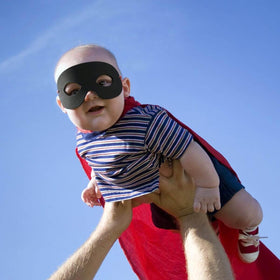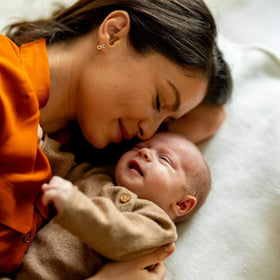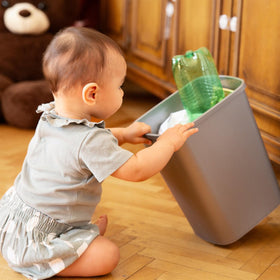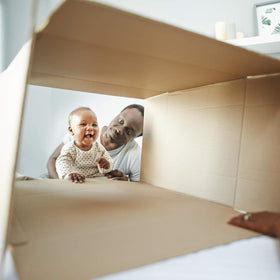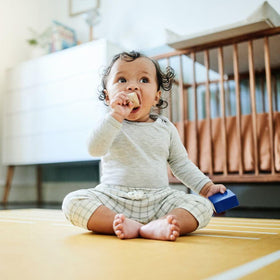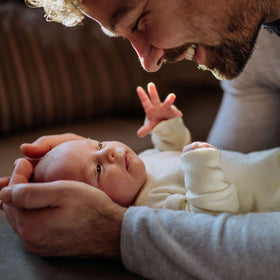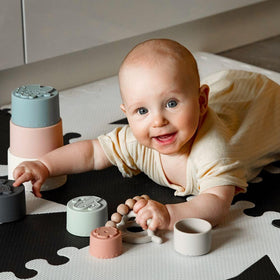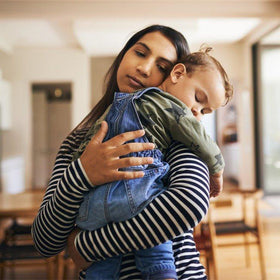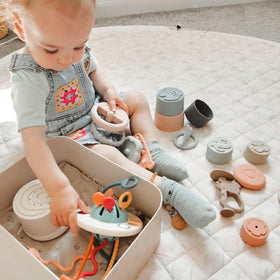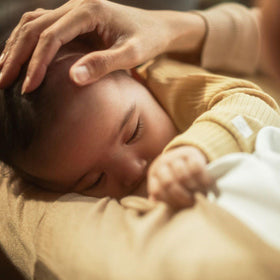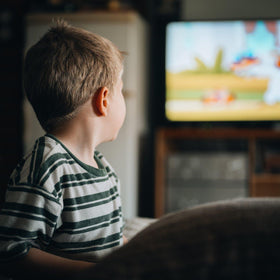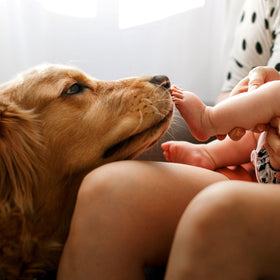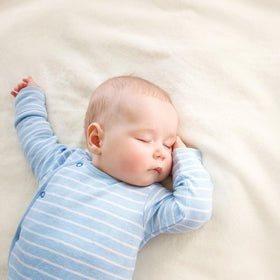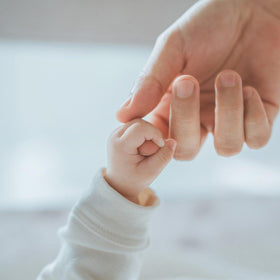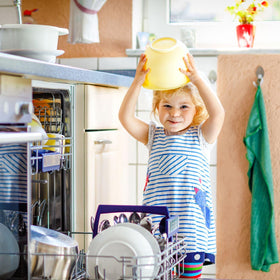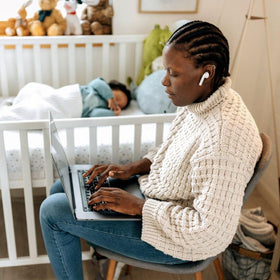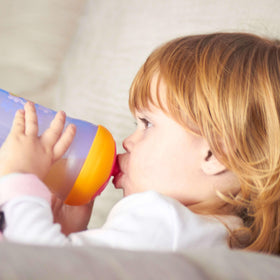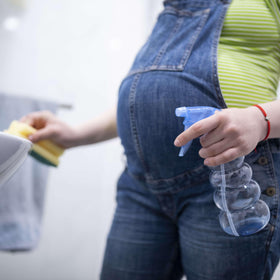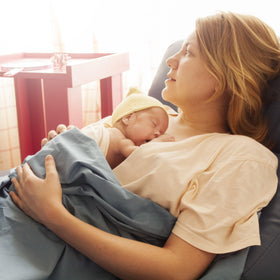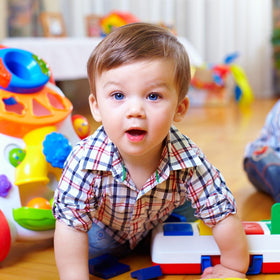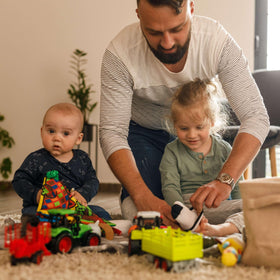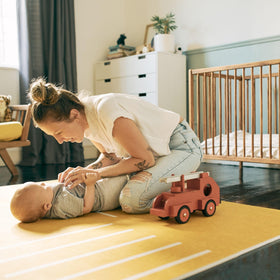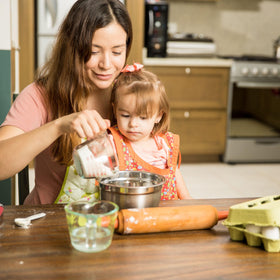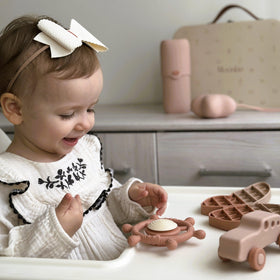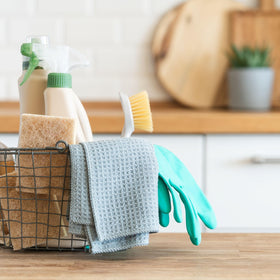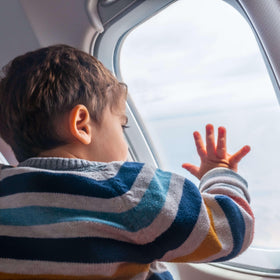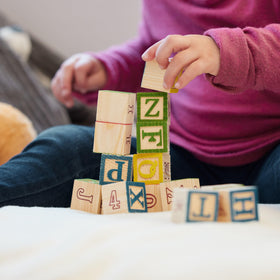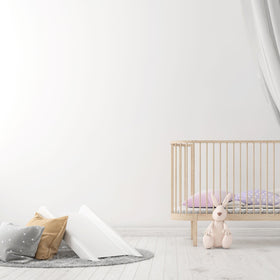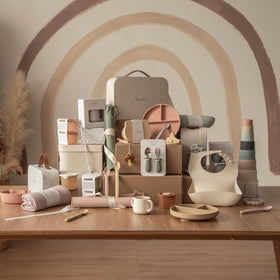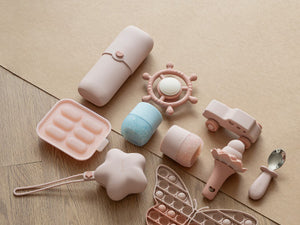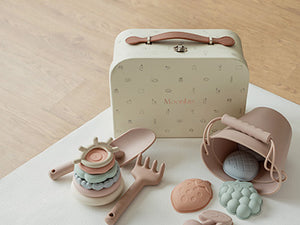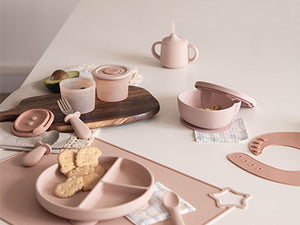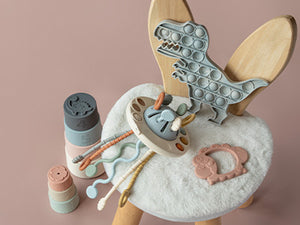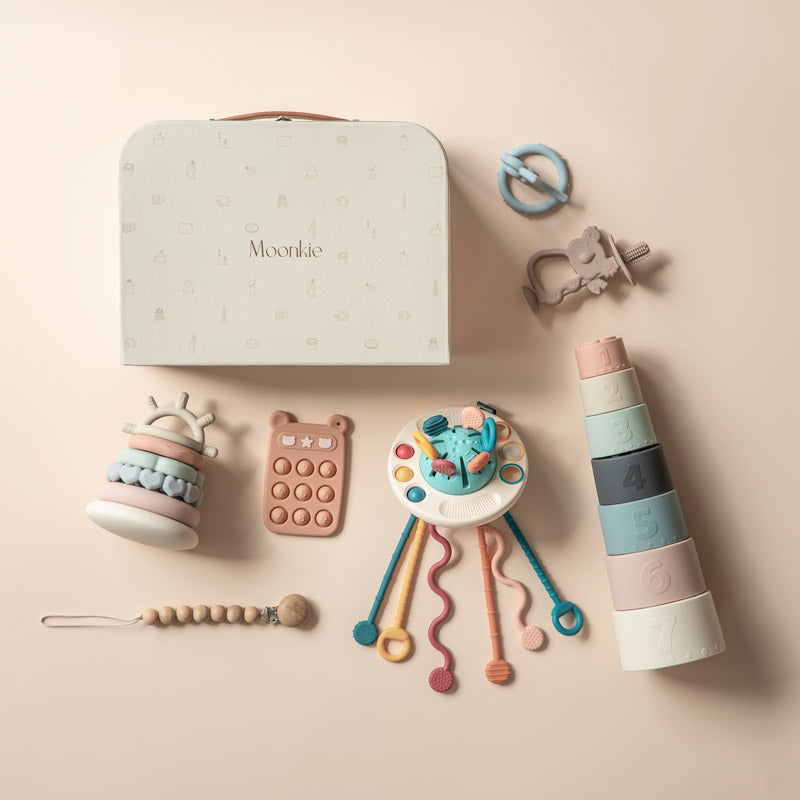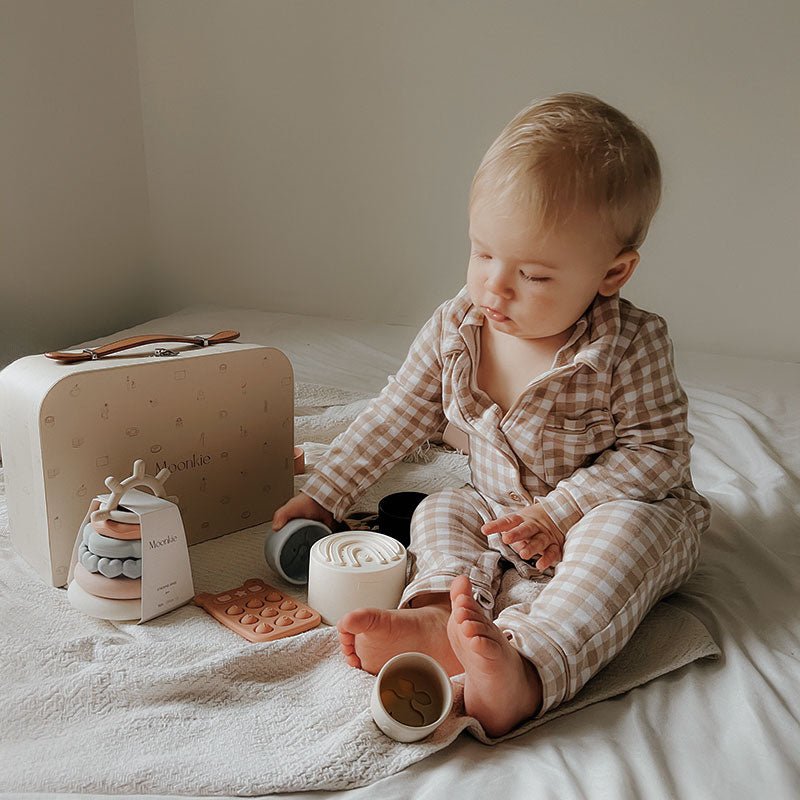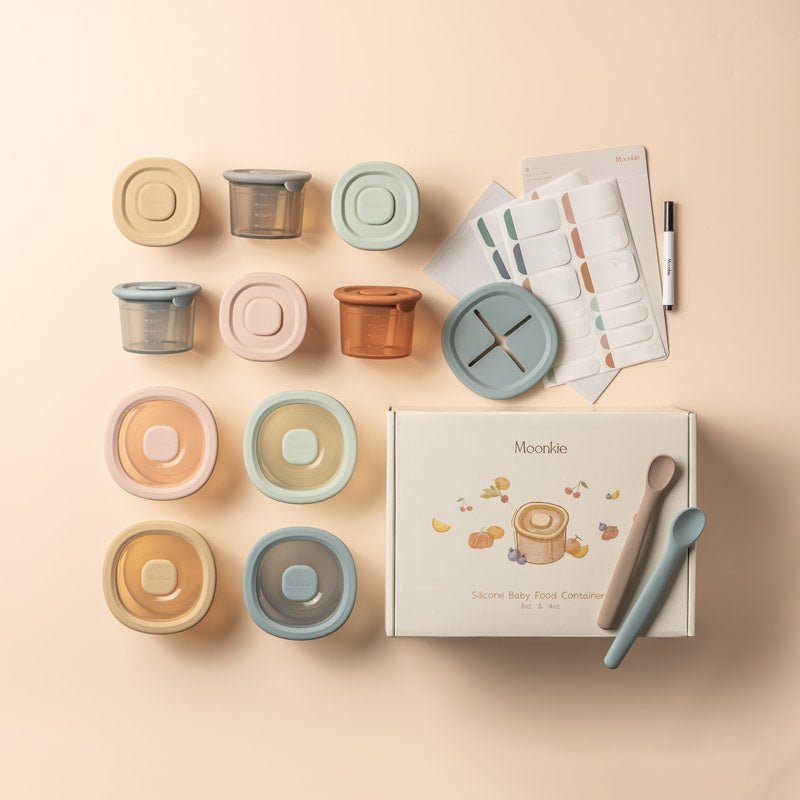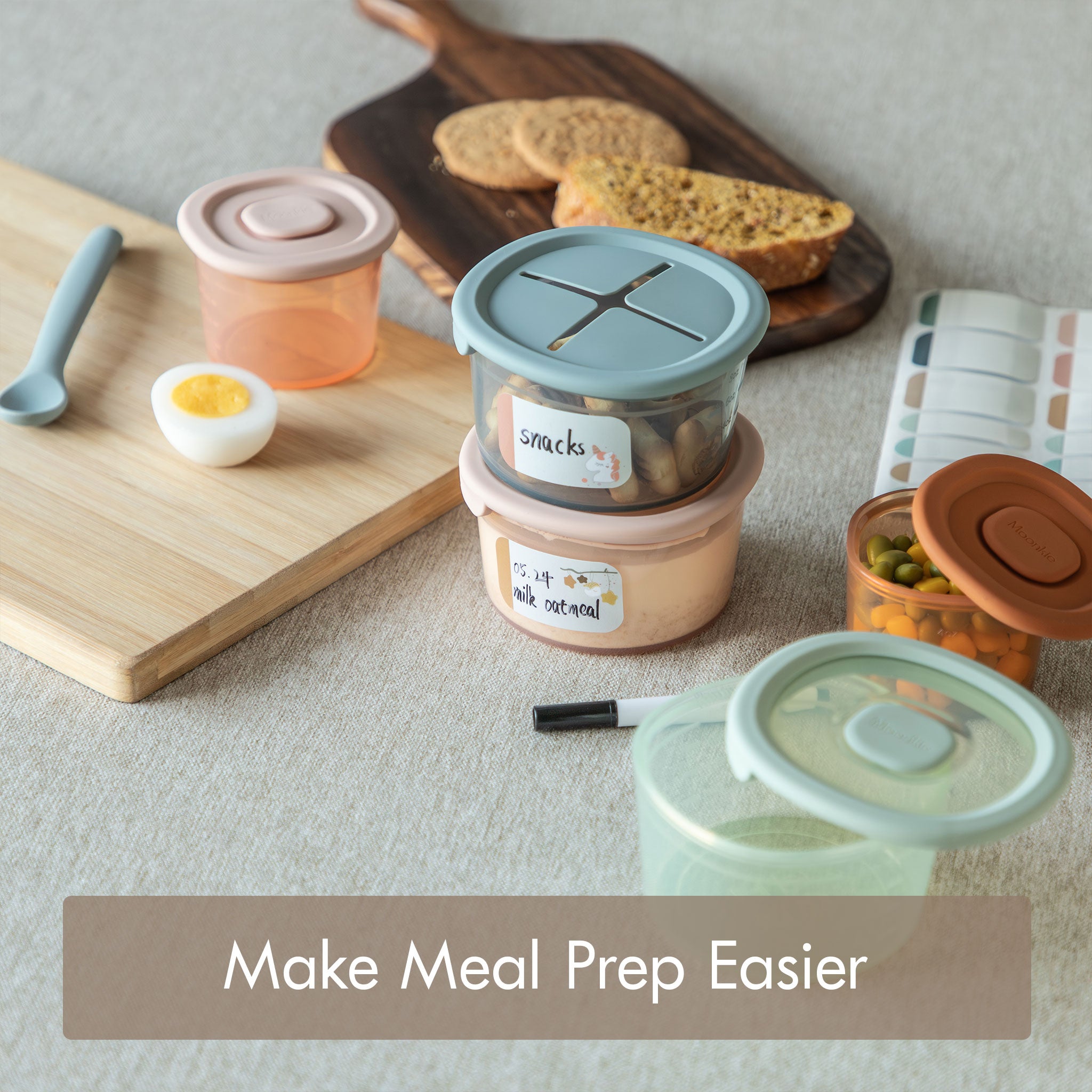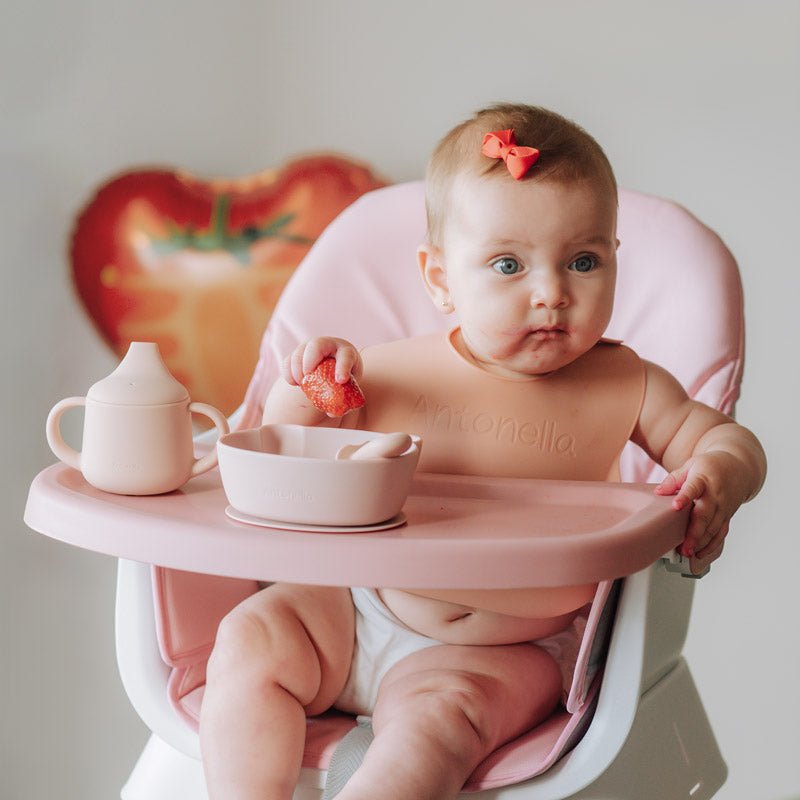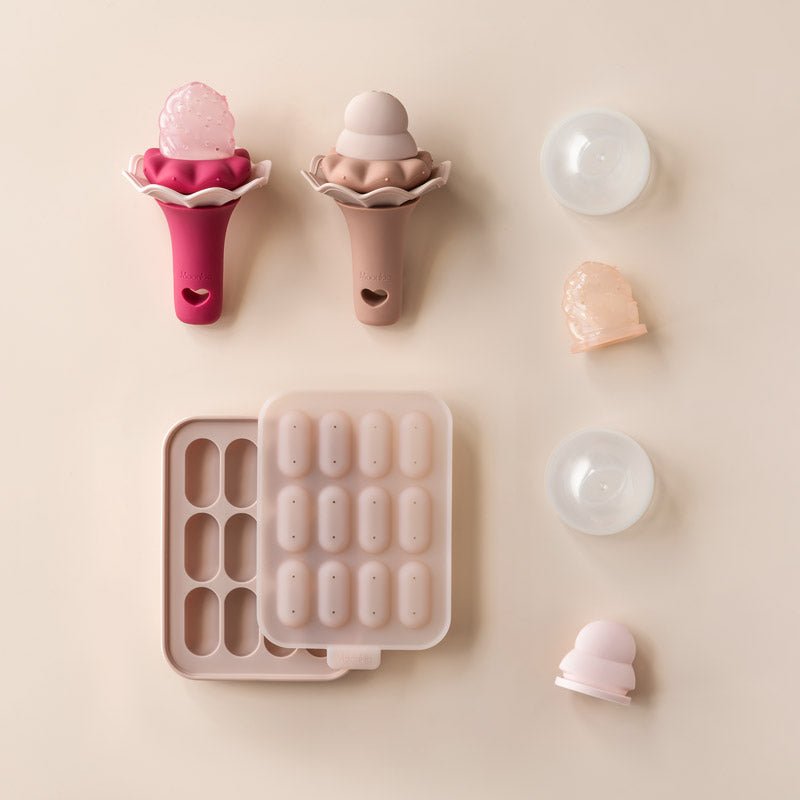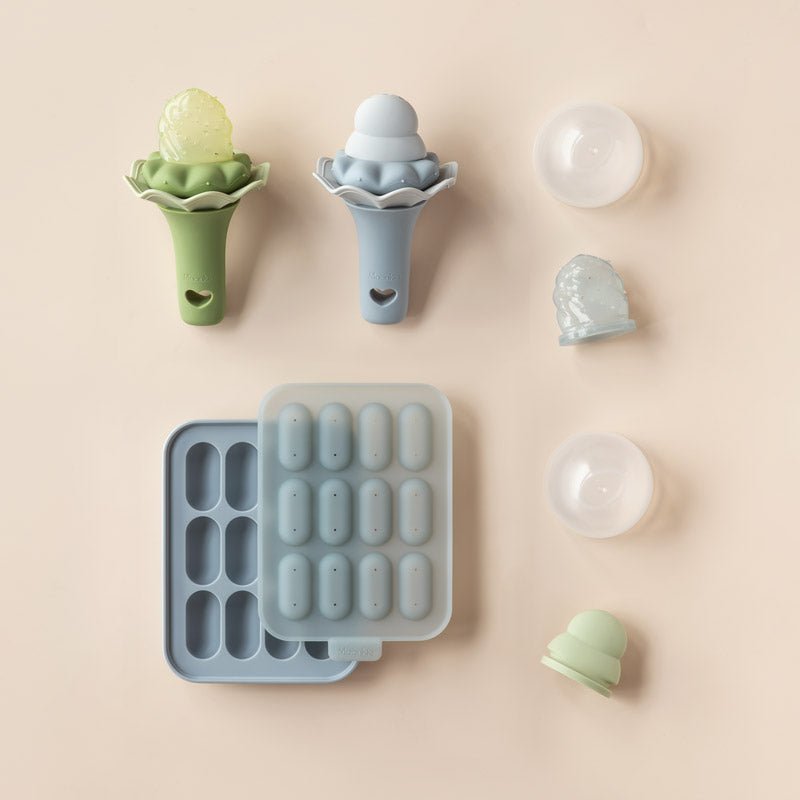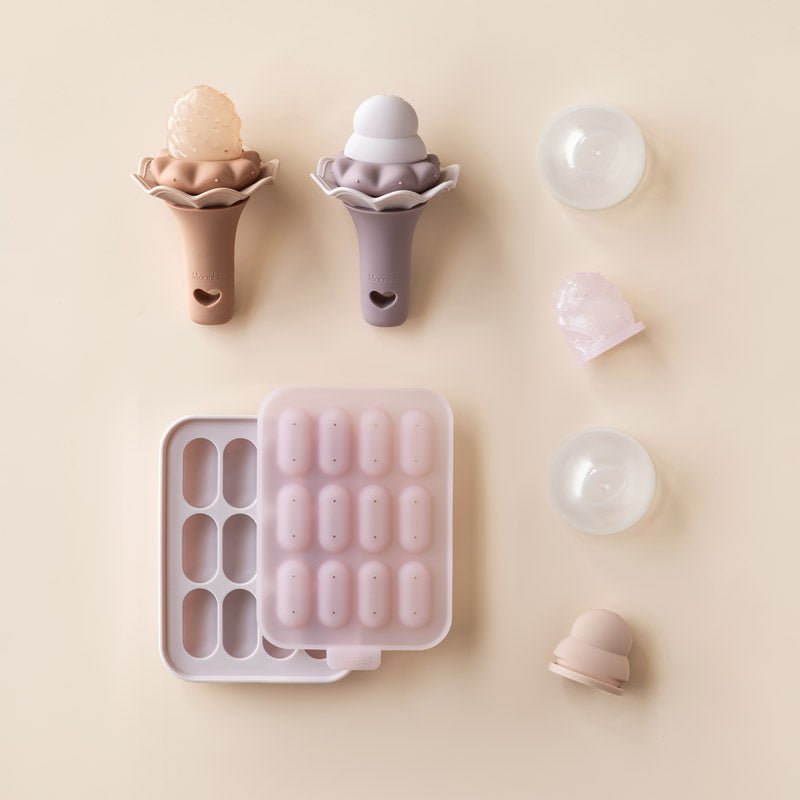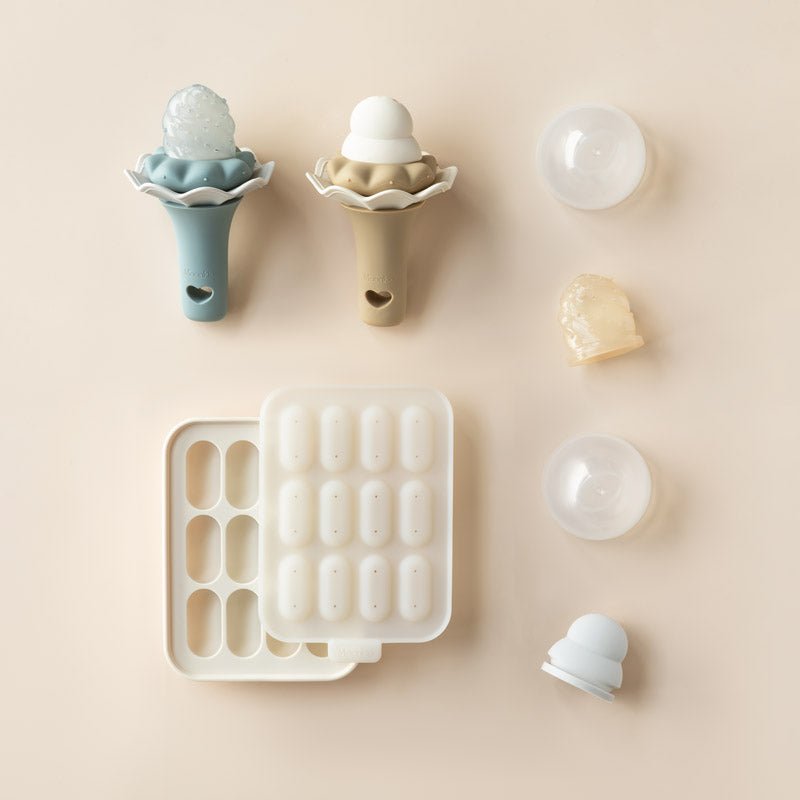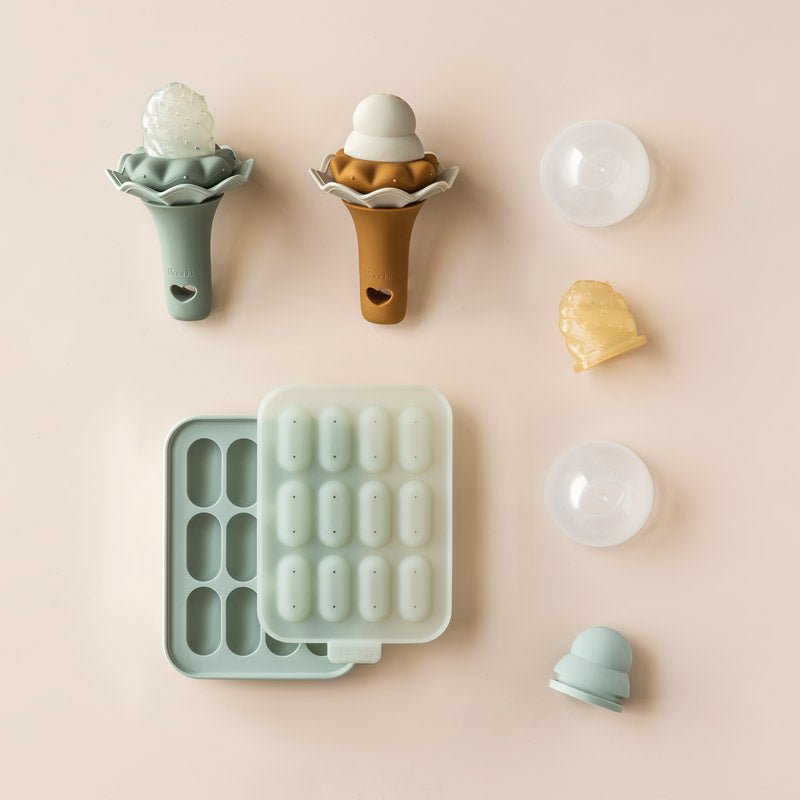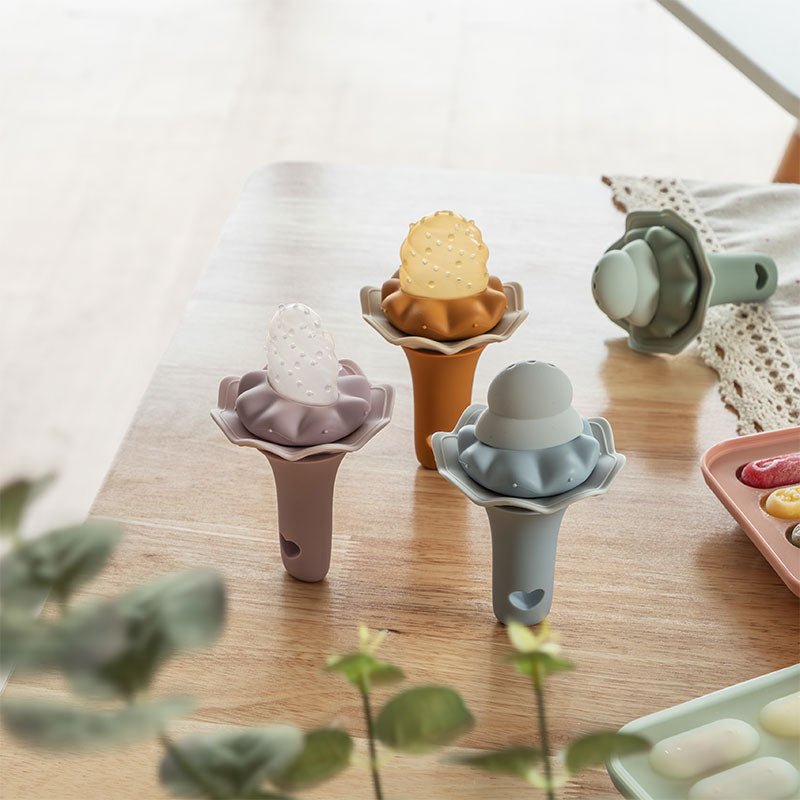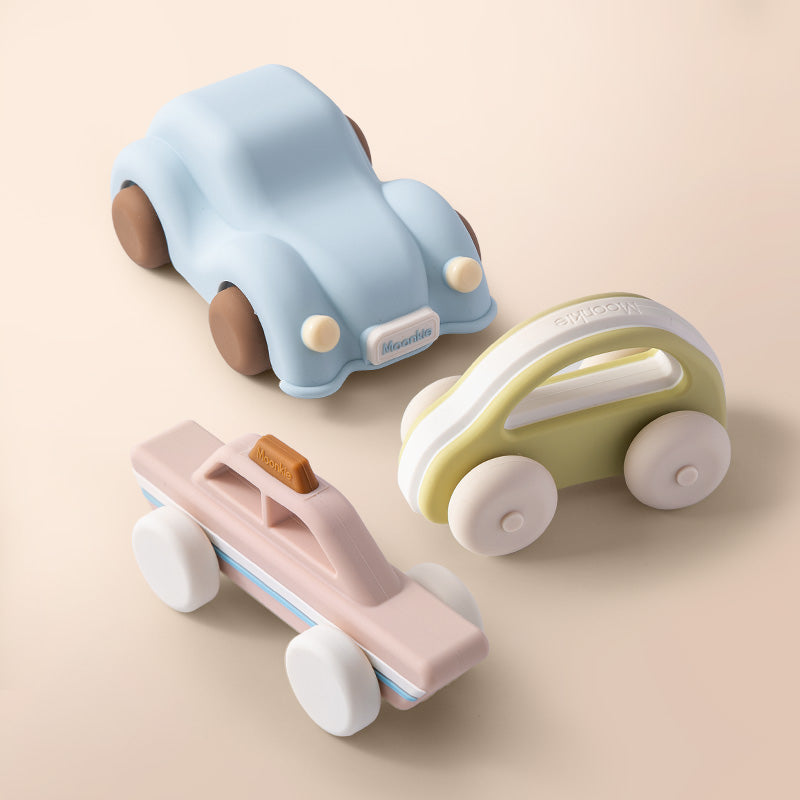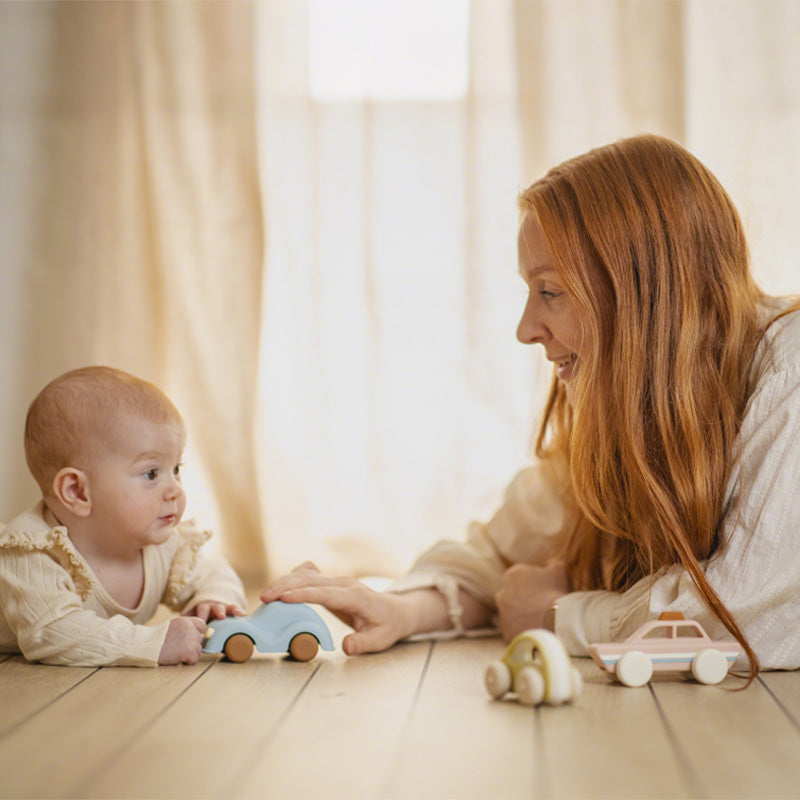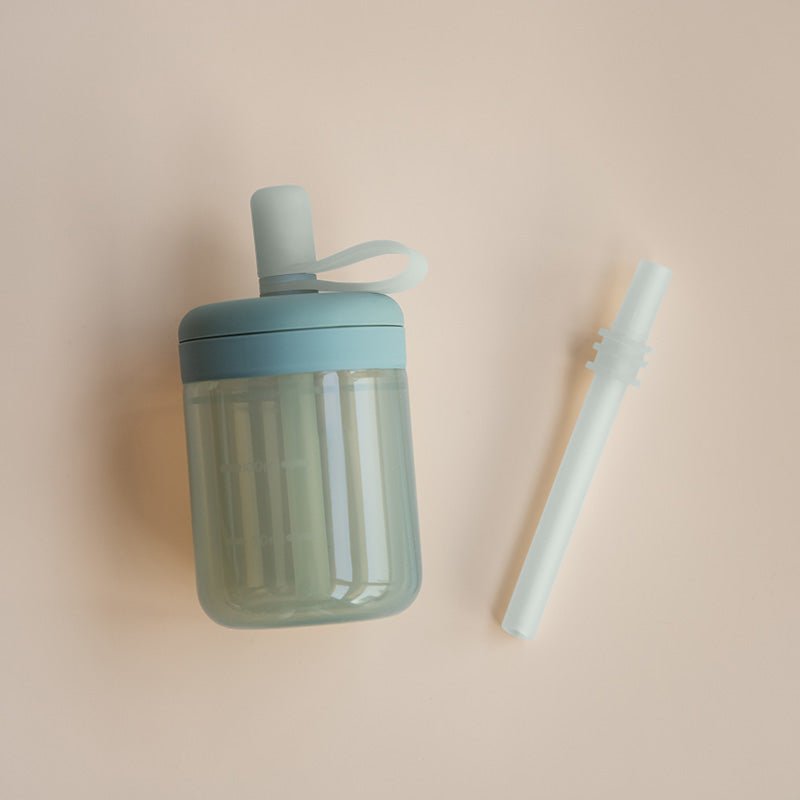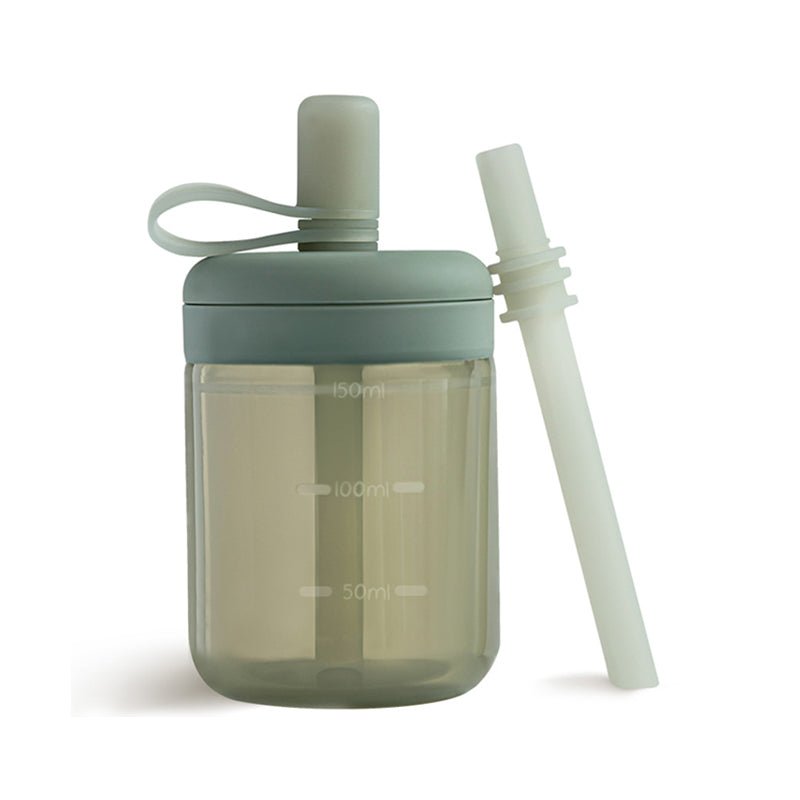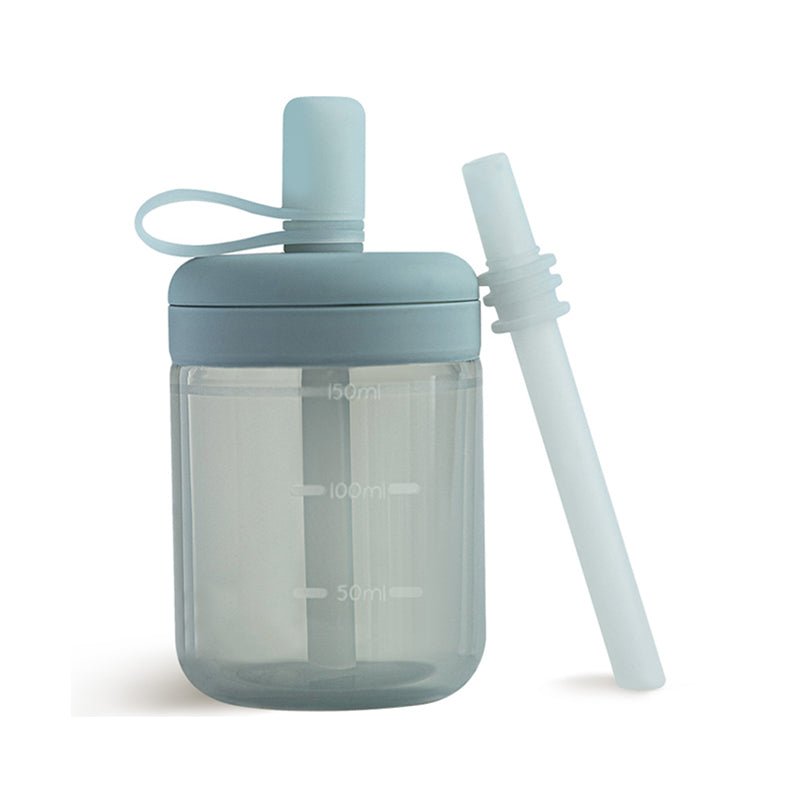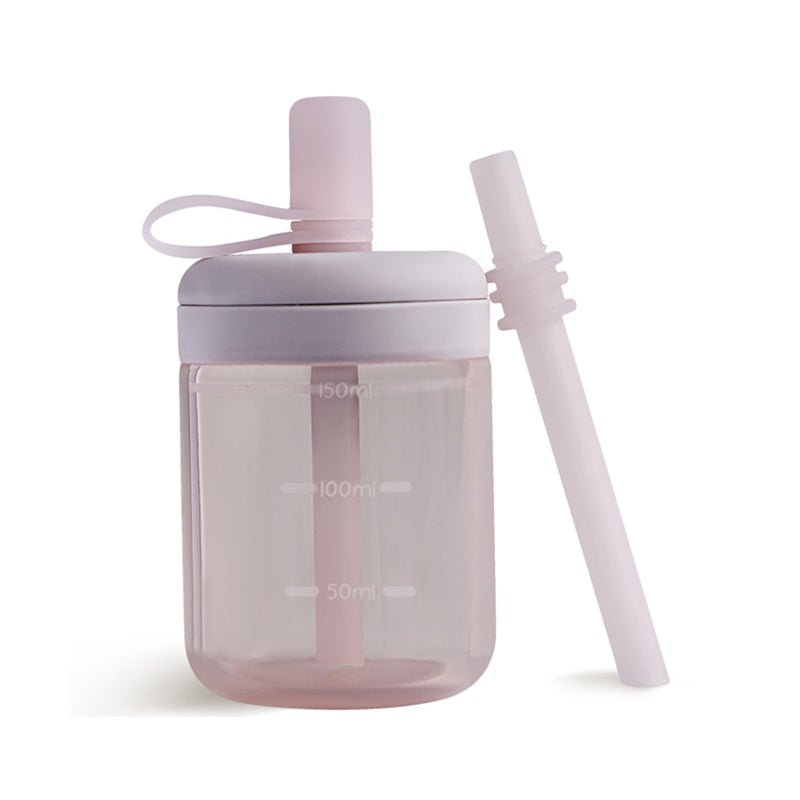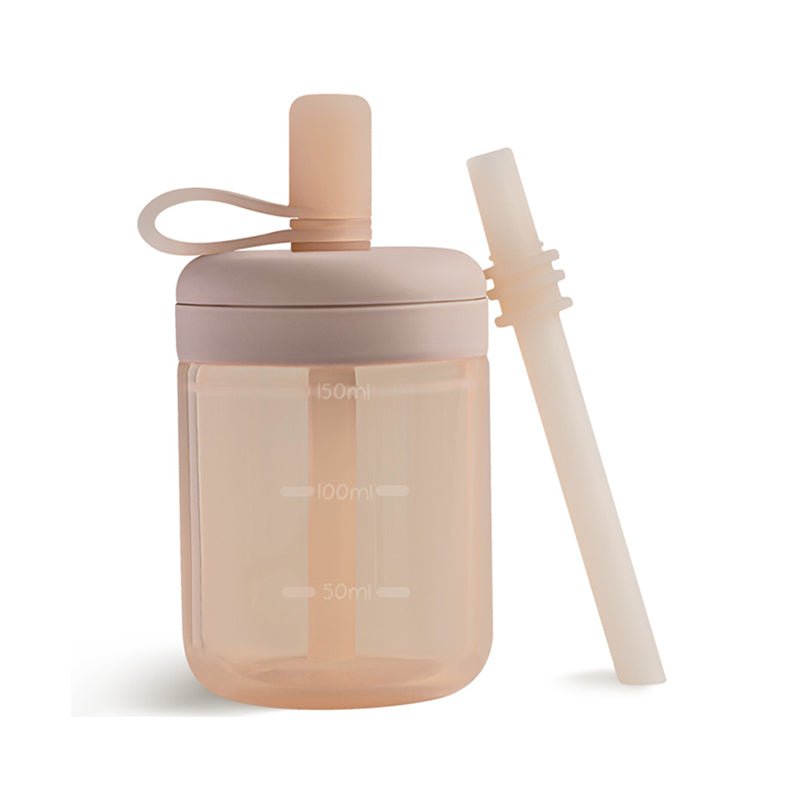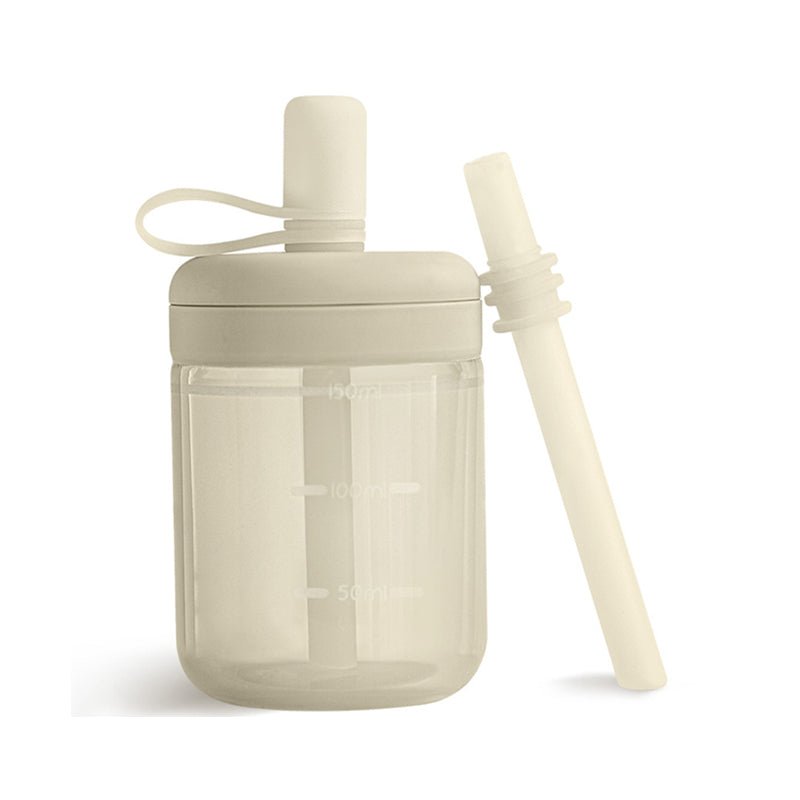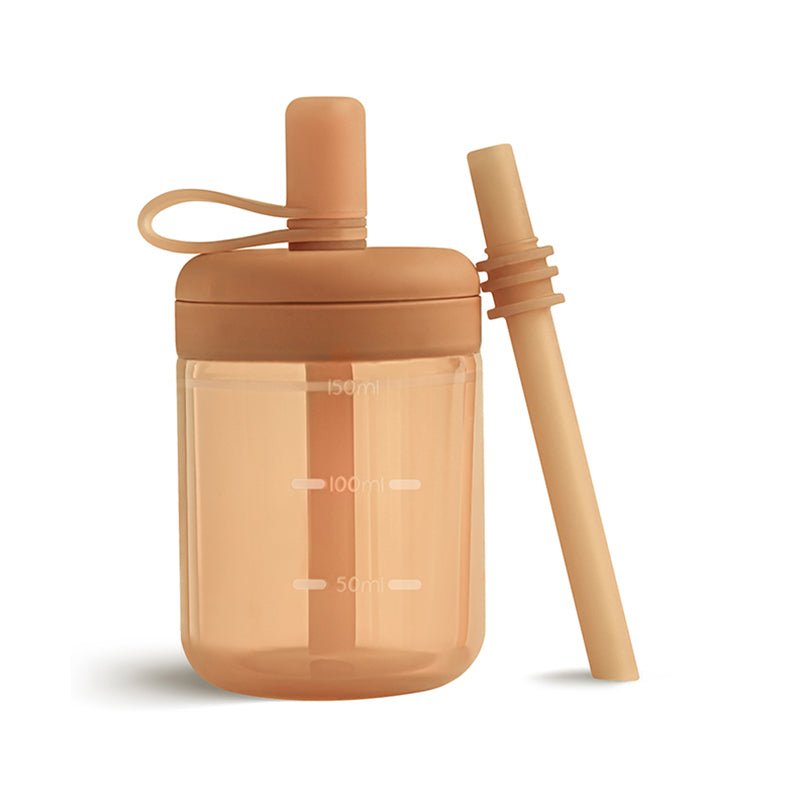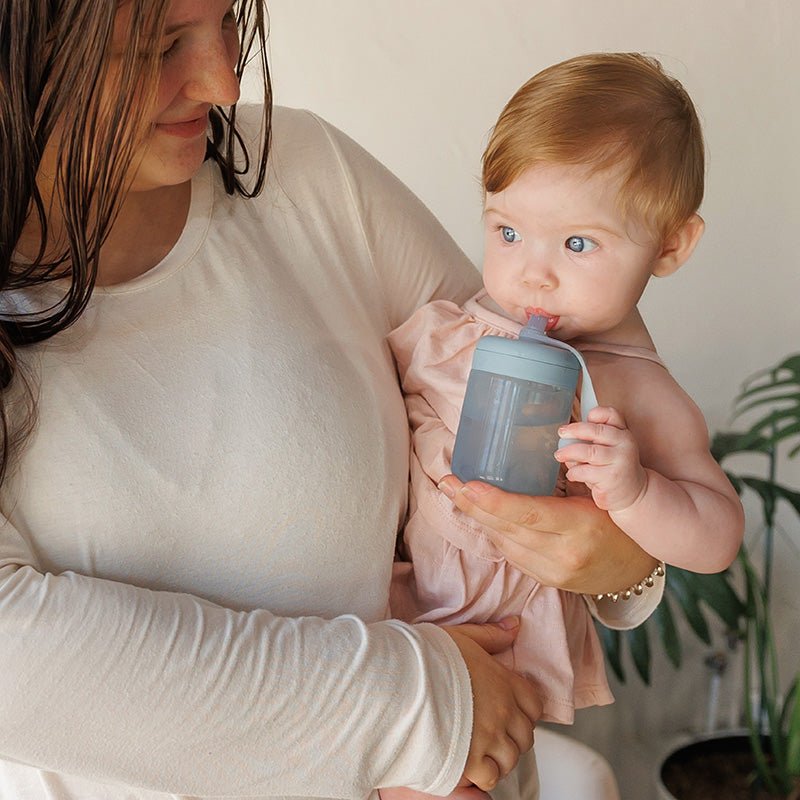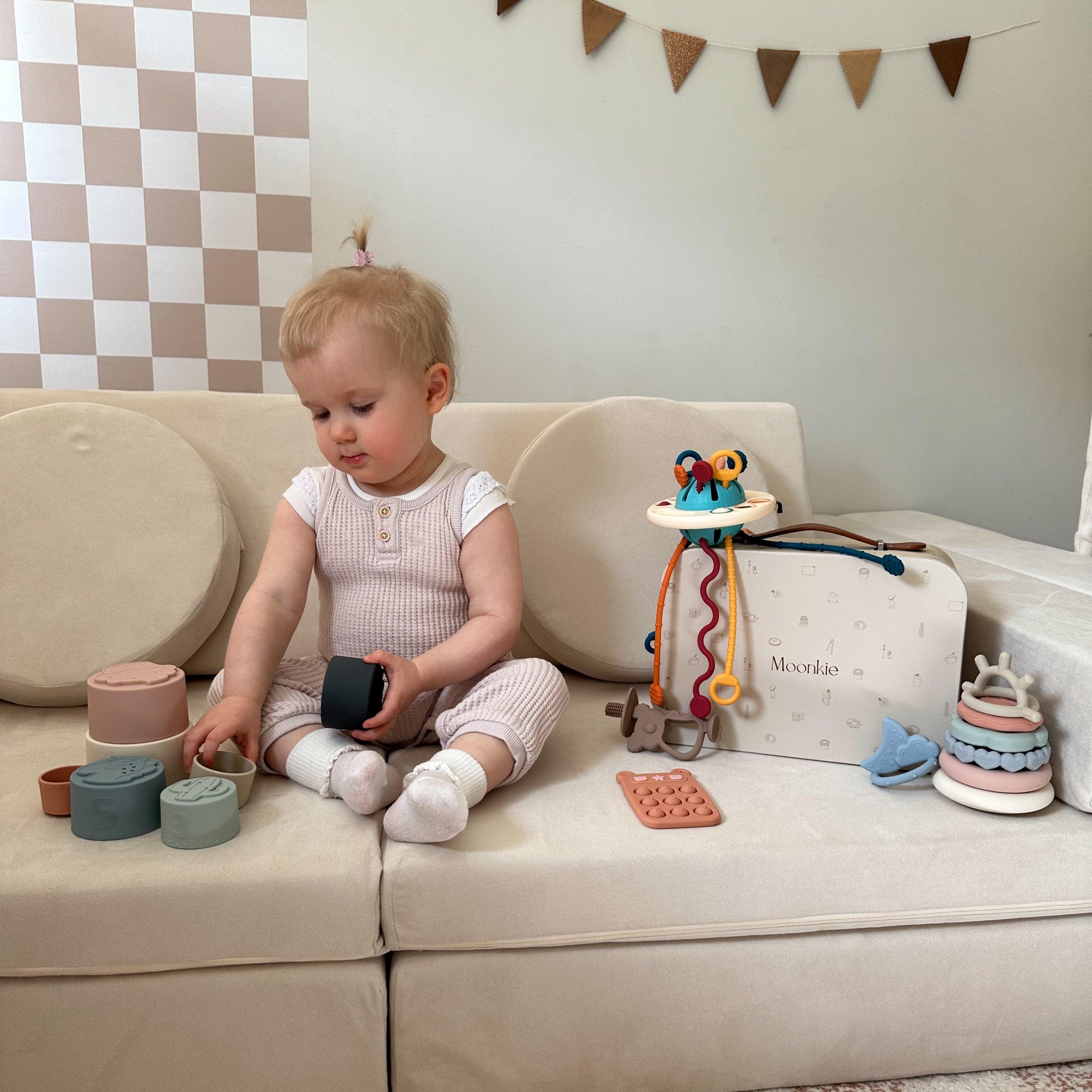Once the initial awe of holding that sweet bundle in your arms has passed, you may feel a great weight of responsibility settle on your shoulders to give your baby the absolute best: "What can I do to give my baby the best start in life?"
Sensory activities help children explore the world around them, improve their overall well-being, and develop their cognitive, physical, and emotional skills. For example, activities like music, tummy time, and playing with sensory toys are essential for your baby's healthy development.
Sensory activities are critical to a child's development from birth to kindergarten, but you need to change them up as your child is ready to move on to something more challenging. This guide will walk you through how sensory activities work and provide age-appropriate ideas from 0 to 5.
In This Article
Why Are Sensory Activities Important for Babies?
Babies have a natural curiosity to explore the world around them, and amazingly, you don't have to teach them this! Sensory activities provide your baby with opportunities to engage their senses: sight, sound, smell, touch, and even taste.
These activities help babies learn about the world while also developing their all-important physical and cognitive skills, such as hand-eye coordination, pushing up, rolling over, sitting up, pulling up, grabbing, pinching, listening, smelling, tasting, and identifying textures and materials.
Sensory activities also play a crucial role in brain development. As a baby works on grasping, pulling, and experiencing various activities, food, and sensory toys, they are building neural connections (source).
Perhaps less obvious is the role of sensory activities in helping babies grow socially. Parents who spend lots of time holding their baby, looking them in the eye, talking to them, and playing with them encourage social connection and sensory stimulation, a combination essential to building relationships later in life (source).
In other words, sensory activities help babies build an understanding of the physical world around them and how it works! Know what to expect your little one to focus on and when in 7 Things Every Parent Should Know About the Early Stages of Child Development.
7 Types of Sensory Activities for Babies
You can try many different sensory activities with your baby, but there is one common thread underlying them all: your baby is the doer, not the passive observer. Your baby must be the one doing the exploring, not idly sitting by watching things happen.

For more on why this is important, read Are Montessori Toys Better for My Baby? There, I thoroughly explain sensory toys and their role in a child's early development.
Here are some of the most popular baby sensory activities you can do at home.
1. Tummy Time
Tummy time is crucial for babies because it helps them develop their neck, back, and shoulder muscles. At first, a baby will only be able to lift his head, but with some time and practice, he will begin pushing up onto his hands for a better view and even roll over.
You can make tummy time more sensory-focused by placing different textures and toys around your baby to encourage him to reach and explore.
One of the easiest ways to do this is by laying your baby on a quilt with blocks of various fabric colors and textures. Placing a sensory toy or two nearby will give your baby something to move toward and grasp.
As your little one grows and becomes more able-bodied and mobile, you can prepare an area on the floor with lots of fun things for those little hands to feel.
2. Sensory Bins
Sensory bins are containers filled with materials your baby can touch and explore. You can fill these bins with rice, sand, or water and add toys to encourage exploration. Your baby should be able to sit up before introducing this activity.
Be mindful that the bin should be heavier than your baby because she may attempt to pull up or push up on the side. Also, most babies will try to explore these little bits with their mouths. You should be right beside your little one as she experiences small materials.
Here are a few ideas:
sponges in water
measuring cups in sand
glitter and water in a closed water bottle
marbles in a sealed bottle
different materials glued to a piece of cardboard
ice cubes in a bowl
frozen peas in a bowl
For babies not yet sitting up, you can fill bottles with marbles, bubbles, glitter, or rice, glue the lid back on, and let your baby roll it around. Another option is to fill a Ziploc bag with something interesting (frozen peas, colored dots, cornstarch and water, etc.) and let your little one squeeze and mash it.
Sensory bins with tiny pieces are a fantastic way for your little one to practice fine motor skills. Learn all about supporting your baby's fine motor skill development in Building Fine Motor Skills: What to Expect the First Year.
3. Music and Singing
Babies love music and singing! Whether you play a song on your phone or sing to your baby, your little one will relish listening to melodies and watching you sing to him or dance.
You will also encourage your baby to listen and explore by listening to various types of music. Encourage even more giggles and connection by picking him up and dancing together. It is such a joy when your little one bounces and dances to his favorite tunes!
4. Mirror Games
Place your baby in front of a well-secured mirror or hold a hand-held mirror in front of her so she can see her own reflection and interact with it. Some baby toys come with an unbreakable mirror for your baby to handle and giggle at.
You can go a step further by sitting behind your baby while naming and pointing to parts of your baby's body, or naming emotions as you show them on your own face in the mirror. As she gets older, you can even ask her to point to her eyes, nose, mouth, and ears or make those funny faces in the mirror.
Mirror games are excellent for helping your little one develop body awareness, see emotions, and connect with you.
5. Look at Pictures
Looking at and talking about pictures in a photo album, around the house, or in a picture book is a wonderful way to tell your little one about his family members, friends, and the world beyond the walls of your home.
Before your baby can communicate with words, facial expressions help him understand. Smiling, in particular, represents safety and security in a healthy family. By sharing about family and friends with your little one as you show their smiling faces in pictures, you are helping him recognize smiles and eventually foster a sense of belonging.
6. Watch Moving Objects
Watching moving objects like fan blades, leaves blowing in the breeze, or shadows on a wall is fantastic for capturing and holding your baby's attention. Focusing on movement helps your little one develop visual object-tracking skills.
Taking your baby for a walk outside or simply sitting still in the backyard allows her to see movement she would not see inside. At first, infants cannot see very far, but a baby's eyesight improves rapidly throughout the first year (source). There are several ways you can do this inside and outside — ensure you mix it up often!
Playing outside is integral to providing plenty of practical sensory exploration for kids under 5. Get some great outdoor sensory activity ideas for babies and toddlers in Making Memories with Your Baby or Toddler: Outdoor Playtime Ideas.
7. Suck on Clean Toys
This seems like an odd one, but babies really like to explore by tasting everything. From sucking on fingers and pacifiers to chewing on everything while teething, sucking and chewing are important ways for babies to discover the world around them.
The trick is to make sure your baby doesn't put anything harmful or tiny into his mouth. You can do this preemptively by preparing a play area beforehand with safe toys for chewing and slobbering on. Moonkie's silicone toys and teethers are perfect for this!
5 Tips for Creating a Sensory Environment for Your Baby
Creating a sensory environment for your baby is essential to promoting healthy development. Little ones with a prepared space for exploration are more likely to stay safe and learn well.

Here are some tips to help you create a sensory-rich environment for your baby.
1. Use Lots of Textures
Use different textures throughout your home, especially in the areas your baby can reach. Soft blankets, hard toys, rough carpets, fluffy pillows, and smooth tables are all great textures to have around your home for your baby to feel.
Among the baby toys, having a variety of sensory toys that you rotate out now and then is a superb way to encourage your baby to explore without risking lost interest.
2. Use Distinct Colors
Various colors throughout your home will help your baby develop visual skills. She will learn to distinguish between contrasting colors, look for desired items by color, and eventually describe what something looks like by color.
You can decorate the nursery room or play area with bright, bold colors to draw your baby's eyes from point to point. It is normal for your little one to be drawn to different colors at different stages in her development. Provide her with the colors, and she will do the rest!
3. Use a Variety of Scents
Allowing a variety of scents to waft through your home will help your baby develop his sense of smell and associate specific smells with specific areas and foods.
You can do this in numerous ways; here are just a few ideas:
baby-friendly essential oils in diffusers in each room
baking often in the kitchen
washing pets now and then
using scented cleaning products
scented candles placed well above your baby's reach
Whatever you choose for scenting your home, do your homework to ensure you are not filling your house with heavy chemicals that can actually harm or overwhelm your baby. Early on, your baby's favorite scent is you, so make sure that he has plenty of time with you as well!
Many common household cleaners, scents, plants, detergents, soaps, and materials are actually toxic (or contain toxic chemicals) for your baby. Learn more in 25 Common Household Things That Are Toxic to Your Baby.
4. Play Unique Sounds
Setting up items with unique sounds around your home will engage your baby's listening skills. Everything from your voice to white noise machines, music, and wind chimes is a great option.
You can also add toys that make noises when your baby interacts with them. Ideally, you won't use electric toys that play on their own; instead, opt for wooden blocks, hollow shapes, and silicone baby toys that make interesting noises when clanked, stacked, or tossed.
5. Create a Safe and Comfortable Space
Creating a safe, comfortable space for your little one to explore is crucial for your baby's healthy development and for Mommy's sanity!
Here are few things to consider:
soft furniture
corner covers
outlet covers
rounded edges
a rug on hard floors
baby gates in doorways and stairways that your baby has no business exploring
keep pet food and toys out of reach
put curtains out of reach
cover trash cans
There are far more ways your mischievous little one will get into trouble as time goes on. Always keep a close eye on your baby and plan ahead to keep her out of things you know she would want to explore. Exploring is not bad, but providing a safe place to explore puts Mommy at ease!
Ensure your house preparation is ahead of your little one's abilities in 25 Ways to Prepare Your Home for Baby's Crawling and Walking.
What's the Point of Baby Sensory Toys?
Baby sensory toys are designed to engage one or more of your little one's senses: sight, sound, taste, touch, and smell. Touch is the most apparent sense engaged by toys, but thoughtfully designed toys can engage multiple senses while exercising your baby's hand-eye coordination, pairing skills, and spatial recognition. Anyone who has spent a little time watching a six-month-old explore a space, fixate on a ceiling fan, or taste anything they can grab has seen a baby use their senses to learn. Sensory learning is how little ones learn for most of their early development, so choosing toys wisely is critical for their healthy development.
Anyone who has spent a little time watching a six-month-old explore a space, fixate on a ceiling fan, or taste anything they can grab has seen a baby use their senses to learn. Sensory learning is how little ones learn for most of their early development, so choosing toys wisely is critical for their healthy development.
Parents have got to get stuff done, whether work, chores, cooking, self-care, or helping other kids. Sensory toys provide a safe way for your infant to keep exploring and engaging the senses while you are distracted with other responsibilities.
There are two broad categories of baby toys to keep in mind when shopping for each stage of development: passive and active sensory toys.
Passive Sensory Toys
Passive sensory toys are typically loud and battery-operated. They entertain your baby by distracting him with lights, music, and noises. TV time is a passive sensory activity because, though it engages your little one's listening and visual senses, it does not involve his active participation.
Passive sensory toys require little to no effort from your baby to operate. They are there doing their thing, and your baby simply beholds them. Passive toys are popular for the wow factor they deliver when your little one first sees them and for how well they distract a baby, giving parents a few minutes of rest.
Active Sensory Toys
Active sensory toys do nothing without your little one's active involvement. Your baby must move, shake, push, or otherwise mess with the toy to make something happen. By doing so, your baby learns that certain actions result in specific ways.
Fostering active learning by providing your little one with engaging sensory toys helps her discover new things, fueled by the insatiable desire to explore and learn she was born with. And with her own ability and creativity at the helm, what a fun journey that will be!
What Are Sensory Activities for Toddlers and Preschoolers?
Toddler and preschool sensory activities are more involved and complex, such as gardening, science experiments, and building forts outdoors. They are a phenomenal way to entertain and educate toddlers and preschoolers.

Those brave souls who have decided to homeschool their toddler or preschooler know that juggling their little one's interests, needs, skills, and education can be tough. Thankfully, sensory activities help redirect frustration and impatience toward focusing on and taking in whatever is at hand, to observe what happens next.
What Are the Benefits of Sensory Activities for Preschoolers?
Toddlers and preschoolers are into everything already, so sensory activities are helpful in that they are designed to be messed with. Whether you set up an activity using sand and construction toys or fill a plastic bottle with water and glitter, preschoolers love sensory activities and essentially teach themselves by observation.
Making time to add preschool sensory activities to your pre-k homeschooling routine is also a wise move, as it offers the following benefits.
Sensory Activities Promote Cognitive Development
Sensory activities engage your little one's senses and allow him to do something with that new sensory information. This could be talking through a process in imaginative play, solving a problem, thinking critically about how to use the tools at hand, and building sensory memories.
Immediately after birth, the brain forms neural connections primarily through sensory stimulation (such as hearing and vision). By 4 or 5 months old, a baby is really beginning to hear syllables and experimenting with making sounds (source).
By the time a baby becomes a toddler (around 12 months old), he is forming neural connections for higher cognitive functions, such as working memory, mental imagery, and purposeful action (source).
The sheer number of neural connections a young child forms between 0 and 3 years old (1 million per second!) makes this a crucial period for cognitive development.
Add that some research suggests that 3- to 5-year-olds have advantages in reasoning, memory, and decision-making over older learners, and you can see why working with a preschooler's interests and innate desire to explore through activities is critical to his brain development (source).
Sensory Activities Encourage Language Development
Give your toddler a sensory activity and some space, and listen to what she has to say. She will probably begin using new sounds in pretend play to "describe" the activity, and she may babble through whatever scenario she is playing out. This is fantastic for language development!
You can even sit by or play with her and talk through what you are doing in the activity. Don't use baby talk because your little one is listening to you to figure out how to describe what she's doing. Sensory activities are excellent for introducing relevant vocabulary for specific contexts that may take a while to reach otherwise.
As you speak, use a variety of verb tenses to describe what you are now doing, what you did before, and what you will do next. English is a tricky language grammatically, so you might as well start showing your little one how to explain actions in time now!
Get more ideas on how to build your little one's language skills through activities in the toddler years in Montessori Language Activities: Helping Your Child Learn Through Play.
Sensory Activities Develop Fine and Gross Motor Skills
Many sensory activities require your little one to use his hands and fingers, which is precisely what he needs to develop fine motor control for writing and other tedious tasks later in life. Obstacle courses and outdoor sensory activities encourage gross motor skills such as jumping, crawling, and running.
Fine and gross motor skills are built by trial and error through lots of practice. The good news is that it is easy to provide practice opportunities! For fine motor skill activities, try these ideas:
stacking blocks
making racetracks
building forts
doing crafts
painting
coloring
sorting colored beads
Gross motor skill activities are lots of fun, too! Here are a few to get your toddler or preschooler started:
obstacle course
tag
hide-and-seek
rolling a ball to each other
follow the leader
"the floor is lava" game
Simon Says
"find me a _____" game
Sensory Activities Bring Out Imaginative Play and Creativity
The way little kids can take anything and turn it into an imaginative game is astounding! And it turns out they need to play imaginatively to consolidate the information they have learned over time.

Pretend play is like a facilitator for speaking in new contexts, running through other ways a real-life scenario could have worked out, solving imaginary problems, regulating one's own emotions, figuring out how to communicate and work with others, and coming up with possible solutions to nagging issues (source).
Essentially, pretend play is integral to a child's holistic development. Though sensory activities are often simple things thrown together for open play, they serve as the backdrop for exploration, observation, discovery, imaginative play, and creativity.
A Sensory Activity Example
For example, let's say you've set up a large bin of sand and tossed in a scoop, a funnel, a bottle, a cup, a paper towel tube, and a bulldozer toy. Your toddler will likely love feeling the sand, burying his hands, and letting scoops of sand fall onto his hand. But before long, he will try to use the tools you provided together.
During this sensory activity (and as you return to it multiple times), your little one will learn a few lessons through action and practice:
My actions affect what happens in this box.
The sand feels grainy.
Sand falls.
I can scoop sand and put it through other things.
Sand covers things.
I can't pick up sand with my hands as efficiently as with a scoop.
I can make tracks in the sand, which will stay until I move things.
Obviously, your toddler will not use these words, but understanding these points will develop with repeated practice.
Other benefits your toddler will gain from this sensory activity include:
Memories of how sand moves and feels
Fine motor skills for cupping hands, pinching bits of sand, rolling things around, pushing sand, pushing things through sand, releasing things quickly or slowly, and grabbing and using tools
Observation of sand's movements
Creative thinking for how to use these tools to manipulate the sand
Emotional regulation and calmness of doing something interesting
Babbling about what he's doing to the sand
Creating onomatopoeias for the sounds the sand makes when he does specific actions
Imagining construction scenarios and playing through them
Yep! All of this is from simply giving your kiddo time with a box of sand and a few random tools. Your preschooler will essentially teach himself through observation and exploration, which is what we want! I mean, how would you explain these lessons to him?
7 Unique Sensory Activity Ideas for Toddlers and Preschoolers
Sensory activities work wonders for entertaining and educating preschoolers (and even babies). But having a few ideas now will give you time to prepare for a unique sensory exploration experience for your little one.

Sensory activities can be simple (like colored rice in a bottle) or complex (like setting up a finger craft). Here are seven unique sensory activities I've enjoyed doing with my own toddlers and preschoolers.
1. Sensory Hunt (4 and 5-year-olds)
Once I knew my kids could identify textures from memory, I set up a sensory scavenger hunt. All you have to do for this is collect various textured things and hide them around the yard or house. Then, you can guide your little ones with clues (older), saying "hotter" and "colder" (younger kids), or with pictures (younger kids).
For example, you can hide 3 to 5 uniquely textured items around a room or home, like a piece of coarse sandpaper, a squishy ball, a fluffy blanket, a small smooth chalkboard, and a woven basket. You could give the following hints for each one:
What is super rough and coarse but flat like paper?
What ball is easy to squeeze but cannot bounce?
What is very warm, soft, and stays with you at night?
What is smooth and black but gets dirty when you write on it?
What can hold a lot of things but cannot hold water?
If your little genius has trouble figuring out the answer, give her a hint about the room or place where she can find something that matches the description. You may be surprised at how well your preschooler can play this game!
If your preschooler needs a simpler version, try asking her for something soft, rough, green, or something that makes a particular sound. She can build her confidence with this and then grow to do the more complex version above.
2. Cooking and Baking (2 to 5-year-olds)
Cooking and baking are excellent sensory activities because they are step-by-step processes that can range in difficulty and involve many senses. Even better, cooking and baking are life skills your little one will need to learn eventually anyway!
You can involve your preschooler in helping you cook meals, prepare snacks, or bake a dessert to share with friends and neighbors. Making fruit salad, jello, bread, cookies, cake, scrambled eggs, spaghetti---you name it!
Of course, you must keep your little one safe from heat and sharp edges, but you can explain these precautions and show your preschooler how to pay close attention in the kitchen. After cooking or baking, you can even show him how to wash the dishes!
Toddlers are not as dexterous as preschoolers, but they can help with buttering bread, kneading dough, scooping cookie dough, making noodles, cracking eggs, or cutting watermelon slices into cubes with a butterknife. It will be messy, but he will have a blast!
3. Feng Shui (3 to 5-year-olds)
Take a box or bin and collect some of your little one's tiny house toys. Then describe how a little doll will soon move into the box, but will need help arranging her furniture. If your preschooler likes playing with dolls or "little people," then she may really enjoy this one.
You can make this as complex or as simple as your toddler or preschooler can handle. My littles liked using dominoes for walls or furniture and often ran off to grab other tiny toys to serve other furniture functions. This activity is superb for spatial recognition and fine motor skills.
4. Sensory Story Time (2 to 5-year-olds)
If you have sensory storybooks (with different textures on the pages), use those for toddlers. But 4- and 5-year-olds may like to try to make the sensory elements happen as you read the story.
For example, you can collect a bin of random things to make sounds, textures, and colors come to life in the story you will read at storytime.
Items could be boots for the sound of walking, a rainstick for rain, a partially full water bottle for the sound of water, some playdough for "splat" sounds, a battery-operated fan for wind, a flashlight for sunlight,...get creative!
Reading to one-year-olds is another story altogether. Learn how to engage young toddlers during storytime in 10 Tips for Encouraging Your One-Year-Old's Love of Books.
5. Sensory Obstacle Course (3 to 5-year-olds)
Gather a few textured or noisy materials and create an obstacle course for your preschooler, indoors or outdoors. You can set it up for your little one to go through only touching a specific texture or color (avoiding all other textures or colors).
You can use bubble wrap, colored pieces of cardboard, couch cushions, wood, rocks, and anything else you can think of for this activity. Younger toddlers would enjoy this activity as well, but you will have to simplify the course and instructions quite a bit.
6. Listening Challenge (2 to 5-year-olds)
A listening challenge involves collecting things that make different sounds and asking your little one to identify what each one could be while he's not looking.
Once he's pretty good at this, you can assign a specific movement to each sound and see if he can cross the yard by moving to the sound you play.
For example, you could do the following:
drum = stomp
whistle = jump
cymbal = somersault
snapping fingers = jump backwards
clapping hands = run
clinking spoons = walk in slow motion
Get creative and have fun with this one!
7. Chopstick Challenge (3 to 5-year-olds)
Take a baking sheet or tray and put some Cheerios, raisins, peanuts, dark chocolate drops, mini marshmallows, and whatever other small snacks your little one likes. Set it on a sturdy table and give your little one a pair of chopsticks or plastic tweezers.
For whatever reason, my preschoolers LOVE this sensory activity and are really good at using chopsticks! To level it up, add a bit of colorful cereal in the bin and have your preschooler try to sort out the different cereals with a pair of chopsticks.
5 Tips for Incorporating Sensory Activities into Homeschooling
If you are homeschooling your preschooler, sensory activities are a lifesaver! Sensory activities are beneficial for your little one's holistic development and also a fun educational opportunity to do together.

There will definitely be days that are harder than others, but know that homeschooling your preschooler is worth the hassle! Here are a few practical tips from experience:
Make sensory activities a regular part of your day.
Keep things organized and plan ahead.
Keep it simple; your preschooler is likely totally fine with simple.
Choose activities that interest your preschooler.
Be flexible and breathe — not everything will be a hit or go as planned!
If you have multiple kids to educate at home, check out these activities for sibling groups: Multiple Young Kids at Home: 10 Fun Activities at Home for Sibling Groups.
Do Toddlers and Preschoolers Benefit From Sensory Toys?
Toddlers and preschoolers benefit from sensory toys, but toddlers benefit more. From 0 to 3 years old, the brain forms an astonishing 1 million new neural connections per second (source).
To read specifically about toddlers and sensory toys, check out Are Toddlers Too Old for Sensory Toys?
Though it slows down a bit, the brain continues to grow quickly until about 5 years old, when it reaches 90% of its eventual adult size (source). Sensory input through toys and activities is critical during these growth periods, and a child naturally pursues sensory exploration during this time.
Just as with babies, sensory toys offer safe tools for play while parents are busy. However, 4- and 5-year-olds can enjoy sensory toys from new angles, such as solving puzzles with multiple senses, deeper imaginative play, and more complicated communication, making age-appropriate designs crucial for engaging play.
In a Nutshell
Sensory activities are an excellent way to promote your young child's healthy development, and you can start from the very beginning! By engaging your little one's senses, you can help her explore the world around her and develop the necessary cognitive and physical skills that, in turn, lay the foundation for overall healthy well-being.
With the activities and tips in this guide, you can create a sensory-rich environment for your little one and help her thrive.

